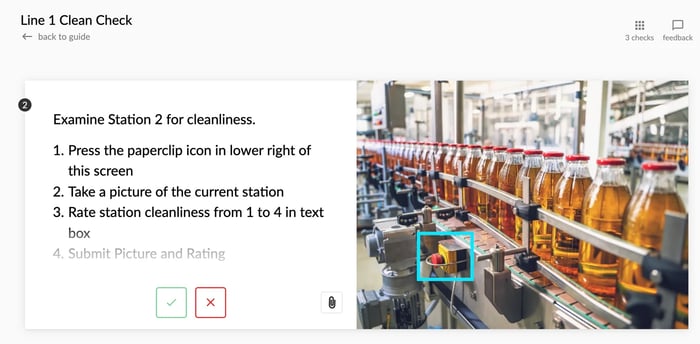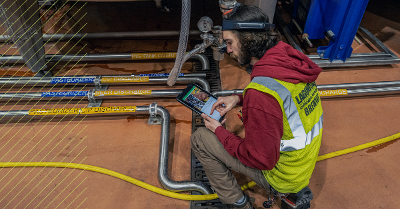What are Lean Principles?
Lean principles and philosophies are the frameworks that help us effectively structure and continuously improve the human elements of the manufacturing process - and beyond. They are methodologies that help frontline teams guide action, track progress, and improve incrementally. They can be applied to almost any element of the manufacturing value chain, and they have relevant applications across the scope of frontline work.
You can have the world’s most advanced machinery, the best digital tools, and the most ambitious goals - but if you don’t have a strategy to guide your human workforce to learn and improve, you’ll be stuck with waste, lower product quality, and high costs.
Some innovators take it a step further and leverage a strategy known as circular manufacturing to reduce waste and costs. This is the process of recycling goods and raw materials back into your own value chain, and can help make manufacturing more sustainable - from both an environmental and financial perspective.
Reduce human errors and waste.
Effective lean continuous improvement in manufacturing aims to identify the subtle and far-reaching waste factors that creep into your lean manufacturing processes and cost you in the long run. By implementing strategies to reduce this waste, you’re upping product quality (think: fewer defects and recalls) while simultaneously reducing costs (think: less raw material and greater efficiency).
Lower costs.
The financial impact of waste on the production floor can be staggering. Billions of dollars are at stake for companies who are slow to reduce wasteful practices and who aren’t optimizing their processes and procedures with better tools and methodologies.
Empower excellence.
But operational excellence and sustainable success don’t stem from a single behavior or process. Rather, it’s essential to build a lasting culture that rewards and celebrates this mindset of continuous improvement and high-quality products.
This ensures that your experts - the frontline teams that perform the work everyday - have an equal stake in a fantastic outcome (great products for you and a rewarding work environment for them. This is also a key component to democratizing and crowdsourcing improvements to operational knowledge.
An ecosystem of Lean philosophies.
Lean often refers to a specific production method - originating in mid-20th century Japan - used by top companies around the world. But there are many schools of thought that aim to accomplish similar goals. The philosophies on this page all focus on creating behavior that elevates efficiency, continuous improvement, training, and effective people management.



.png?width=800&height=418&name=ezgif.com-webp-to-png%20(3).png)
-1.png?width=600&height=314&name=quality%20improvement%20in%20manufacturing%20(6)-1.png)
.png?width=500&height=500&name=KAIZEN%20SOP%201200X1200%20(1).png)
-1.png?width=600&height=314&name=quality%20improvement%20in%20manufacturing%20(7)-1.png)
-2-1.png?width=573&name=Untitled%20design%20(3)-2-1.png)

